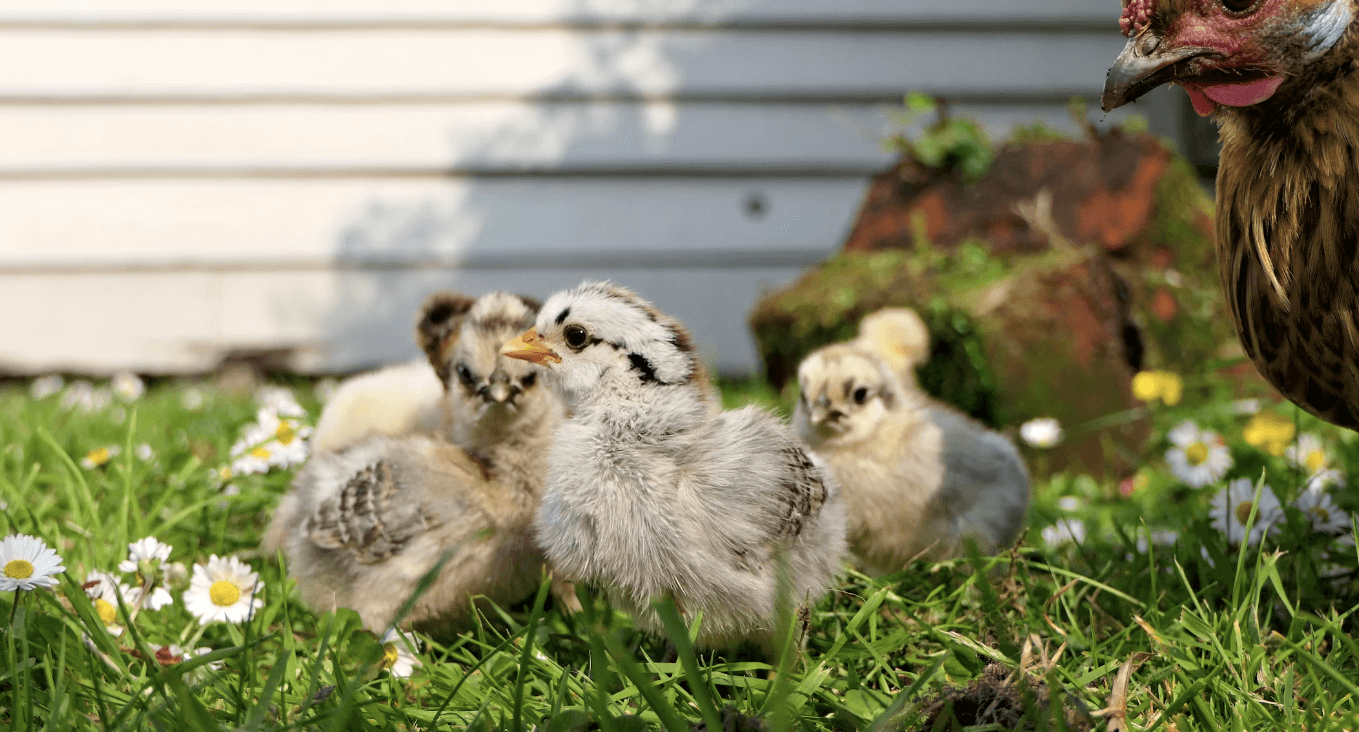Any chicken raiser would gladly pass on having to rebuild their flock after losing any number of their flock members to predators, but that’s easier said than done. Not many predators will shy away from snatching a tasty chicken bite.
There’s a long list of predators competing for your precious fowl and that’s what makes keeping your chickens safe from harm even more challenging and time-sensitive.
So, let’s get down to it. This hands-on guide on how to protect chickens from predators will inform you on how to:
- Defend chickens from different predators,
- Know a solid, safe coop when you see one,
- Secure your chicken coop and run, etc
But first, let’s focus on identifying the predator.
Identify the Predator
As mentioned, chicken meat is loved by many, so your birds can be on the menu of many predators including foxes and coyotes, skunks and opossums, and even bobcats, hyenas and dogs.
However, when predator-proofing your chickens, your first step is to find the main offenders in your homestead.
Predators will typically leave clues, so there are some simple ways of identifying the predator. Try asking yourself the following questions:
- Are there any tracks or scat left behind?
- Is there a specific way the chickens are attacked?
- What time of day does the predator strike?
That said, only after you’ve learned their hunting habits and after you’ve learned how to follow their tracks will you be able to devise ways to protect your chickens from specific predators. Below is a table to help you with this so next time your chicken gets killed you know who was behind it.
Further on, to help protect chickens from predators and cut down on your poultry attacks, it will help to learn your way around different types of predators—daytime, nocturnal, and aerial.
Know Who You’re Dealing With—A Closer Look at Types of Predators
Daytime Predators
Sorry to break it to you, but if you’re planning on raising chickens in your backyard , you’ll need to keep an eye on your birds and be alert to any predator dangers even during the day.
Some predators will attack poultry during the night, others will take a more flexible approach to their hunting, like foxes and coyotes, and pose a risk to your flock during the day. You can also expect to see an odd dog aiming at your chickens and an occasional snake or rat closing in on your baby chicks or eggs. That’s why to keep foxes and other daytime predators away from your chickens, penning up your feathery friends is mandatory.
Having a sturdy, predator-proof chicken coop is also non-negotiable. If you want to improve on your predator protection, you should strengthen your coop with high-quality hardware, add extra structural support and protect your run extension with chicken wire.
But to protect your chickens against daytime hazards, you should think laterally and include the following protection strategies as well:
- Take stock of your chicken coop condition religiously and repair any damage or weakness accordingly.
- Use motion-activated lights and alarms.
- If dealing with larger predators like bobcats or bears, use sturdier chain link material for your chicken coop fencing (mind that weasels, snakes, and other smaller predators will be able to penetrate such fencing).
Nocturnal Predators
Some nocturnal predators you can expect to crop up in your homestead chicken coop are a weasel, fox, raccoon, opossum, coyote, fisher cat, and wolf. These rarely ever hunt during the day. That said, the best way to protect your chickens from nocturnal predators is to close them in after dusk and lock the door.
But there are more precautions you can take, including but not limited to:
- Installing an automatic coop door. This will come in handy if you’re not coming home until later in the evening. An automatic door opener will shut automatically as dusk approaches and your chickens have all gone to roost.
- Choosing a coop with heavy-duty hardware. Instead of going for cheaper coops with aluminum or thin steel latches, opt for those with heavy-duty hardware. The Chicken Coop Company coops are designed to keep nocturnal predators at bay, even those most apt in breaking in, like wily raccoons.
- Paying extra caution with the windows. Covering all your chicken coop windows and vents with wire will keep smaller nocturnal predators away from your chickens (weasels, anyone?). We’ve taken this even further with our chicken coops that come with hinged side vent covers that can self-lock for even stronger predator protection.
Aerial Predators
So, how to keep chickens safe from hawks, owls, eagles, and other aerial predators? That’s not an easy ride as they can be a real threat to your backyard birds, during both day and night.
The first thing that pops to mind is to create an overhead barrier for your chicken coop and run. You can choose from all sorts of materials here, from simple tarp and bird netting to more robust materials like chicken wire or ½ inch hardware cloth for covering.
You can do as little as stringing a fishing line across the top of your run to protect your chickens against aerial predators. However, when weighing your options, consider that larger raptors will require stronger protection.
Better still, getting a pre-made chicken coop from the Chicken Coop Company can provide you with a super-secure fenced-in chicken run which might as well be your best bet against aerial chicken attacks.
More Predator Protection Tips
After analyzing what types of predators you can expect striking at your backyard flock of birds, below is an insight into more strategies you can tap into to protect your chickens.
Install Motion Sensor Lights
Installing a motion-activated flood light is a great way to keep predators away from your chicken coop. Directing the light toward your coop will chase away most nocturnal predators such as raccoons, skunks, deer, and possums.
You may think that the best way to protect chickens from predators is by hunting them or trapping them. Yet if this is against your state regulations, though, resorting to motion sensor lights will be almost as effective.
Keep Your Chicken Run Secure
You won’t always be able to babysit your feathered girls (and boys), and since leaving them alone to free range is not an option, securing them in a spacious chicken run is a must. Secure is a keyword here.
That’s why it’s wise to make your run extension as predator-proof as possible. You can do this first and foremost by strengthening your coop defenses with heavy-duty carabiners and bolt latches.
Understanding how challenging this can be, we’ve bolstered our Chicken Coop Company coops and run extensions with plenty of predator-proof locks for extra protection.
Employ a Guard Goose
Now, you may have been wondering what animals protect chickens from foxes and other hungry predators. Geese may be of great use if you want to beef up your chicken security standards. They are very skilled guard animals that have no problem giving quick chase to small predators.
They may not be as apt facing larger predators, but hey, geese can be loud, and making fuss by flapping their wings, hissing and squawking may just be enough to get your attention so you can interfere.
Pro tip: Geese are territorial and as such are excellent guards for your predator-vulnerable chickens, but there are ways you can train them to be even more effective. Have your guard geese raised right alongside your chicken chicks.
Even better, get them raised by a chicken hen; when they see chickens as their own flock they’ll be more prone to track the chickens and create alarm when needed.
What Can You Put Around a Chicken Coop to Keep Predators Away?
Everything taken into account, you won’t have a genuine predator-proof chicken coop until you think things through left, right, and center. You still need to find ways to prevent predators from reaching in under the coop.
There is a solution to this and it is typically done by securing your coop with an outward-facing apron of fencing. You can take the easiest approach and lay the fence on the grass at right angles, or you can sink the fencing 8-12 inches into the ground.
And that’s not all, you can dig a trench around your coop and run and fill it with metal scraps and rocks.
But it gets better. You can make it extra difficult for predators to dig underneath the fencing by securing your coop with galvanized vinyl-coated mesh along the bottom. This mesh is easily installed to the bottom of your existing chicken coop by using sturdy stakes and connectors. These get very difficult to dislodge even by stronger critters, making your chicken housing and ranging area super-safe.
Stay Ahead of the Game
So, these are our tips and tricks on how to protect chickens from predators. Now you should be able to think on your feet when there are new chicken predators to deter.
Years of experience in chicken rearing have equipped us to outwit foxes, raccoons, owls, hawks, and more. We at the Chicken Coop Company strive to learn from our good and bad experiences. That’s how we treat our chicken coops as well. We build them to last, and we make them better over time.
We improved on mass-produced chicken coops that come with aluminum or thin steel hardware—swapping them for heavy stainless steel elements that last.
Also, our run, roof, and nesting boxes are reinforced to provide safety for your flock. Browse our product pages if interested in more. Or check out our chicken expert blog pages to stay in the know.





